Billing Management
Don’t pay too much
Gain time, money & peace of mind!
Our goal is to help you fight voluntary or involuntary errors that result in you paying too much. We help you before the treatment (when it is possible) to prepare you for what can happen and what you can do to avoid future problems (like warning you not to sign a form acknowledging your full responsibility to pay each and every cost). After the bill has arrived, we help you get an error-free bill from all providers (hospital & physicians), we review your bills and can even negotiate them for a lower price. In case no agreement is found, we can appeal the decision.
Fighting billing errors
Despite an incredible amount of resources allocated to billing (at the cost of the patient), a lot of mistakes still happen in billing. Currently, 30% of American healthcare costs are spent to pay administrative personnel and for every 10 physicians, almost seven additional employees are engaged in billing activities. This is much higher than in any other Western country.
Still billing errors are common (some studies show that 80% of bills have at least one). The most frequent include:
- charging for a treatment that was not done:
- a treatment or a test that was cancelled
- overcharging for a treatment that was done but costs less than charged by:
- billing it twice (or more)
- unbundling: fragmenting a bundle of treatments usually performed together and by billing them separately instead of the bundle price (which is lower)
- charging for another treatment than the one that was done:
- by upcoding (billing for a related but more serious diagnosis and treatment)
- by using incorrect diagnosis or procedure codes (which can cause your insurance to reject the claim)
- charging for a treatment that was already paid by your insurance
Most of these errors increase your bill (although US healthcare is already the most expensive in the world). For this reason, you have to be proactive in examining details of each and every bill. Call the biller immediately if you spot a mistake and if you can’t get to a solution, call us. We can also help you identify these errors and to get them corrected in a timely manner.


Protecting you against overbilling
Unfortunately, some billing “errors” are the result of a strategy used by some unethical actors in the healthcare system and we can teach you how to identify and protect yourself from them.
1 – Balance billing (surprise billing)
If you go to a hospital that is in-network, you assume that your insurance will cover the costs of your treatment. However, even if the hospital is in-network, it doesn’t mean that all the physicians working in this hospital are. You might then receive a bill from one of these physicians if the reimbursement of his fees would be rejected by your insurance.
You probably had no idea that this physician was out-of-network and was able to treat you in a network hospital…
Well, you are not the only victim of this unethical way of treating patients. In other cases, a hospital determines that a low-value treatment costs an enormous price (a Tylenol pill billed $400 is a common example). The insurance has a contract with the hospital (which is in-network) but only pays a fraction of the price billed ($10). The hospital then sends you the “balance bill” of $390. Apart from being unethical, it is now even illegal in some states.
Only 21 States have a legislation to protect patients from balance billing but only 6 (California, Connecticut, Florida, Illinois, Maryland and New York) are considered to have comprehensive protections. However, some cases continue even in these states. If you feel that you are a victim of balance billing, contact us IMMEDIATELY – we will help you solve the problem.
2 – Sending a bill to you and your insurer
Some providers send their bill to you before the insurance processes it (and establishes how much they will pay and how much you will). Even if you do not pay, some providers send further notices.
Some patients might feel the bill is legitimate and pay it when they should actually wait for the explanation of benefits (EOB) by the insurance, which lists the details of who pays what between you and them. These patients end up paying too much. Always wait for the EOB reflecting what the insurance has paid and what you should pay. Only then should the provider send you his bill for the same amount as what the insurance gave you in the EOB.
3 – Making you sign forms that allow the provider to bill you too much
Most patients don’t know that they don’t need to sign all the forms handed to them prior to any treatment. Chances are you won’t fully understand them and you won’t have time to read them all the way through. We strongly advise you to not sign anything that you haven’t read and understood.
Do not hesitate to add some sentences stating that you will not agree to pay if your care is not in-network, that you will only pay for costs that have been mentioned to you before the test/treatment, and that you will only pay for treatment which is necessary (medically speaking), not overpriced and that will not to be paid by your insurance.
4 – Offering a medical loan in the ER
Some hospitals cross every ethical line and ask patients with bad insurance coverage to sign a request for a loan while they are in the ER, in order for them to get a coverage for their emergency treatment. Not only is this loan above the common price for the treatment (which results in the treatment being overpriced up to the amount of the ER procedure) but it is clearly the worst situation to be in to read, understand and sign for a bank loan (which makes it easy to be denied as valid by lawyers afterwards).



